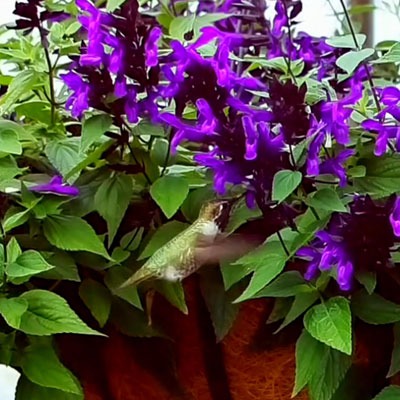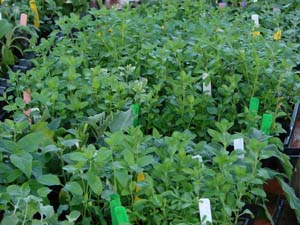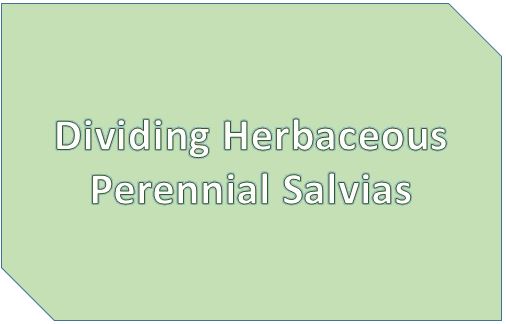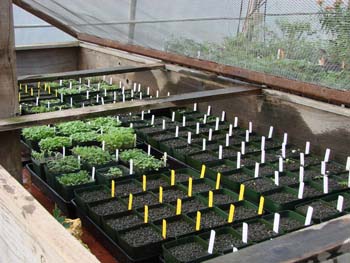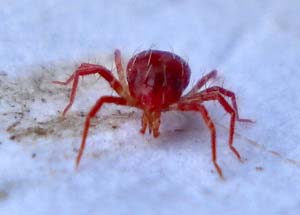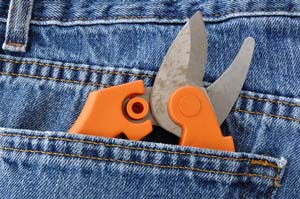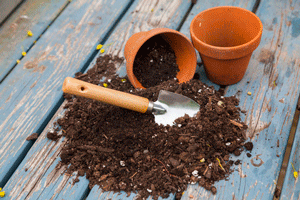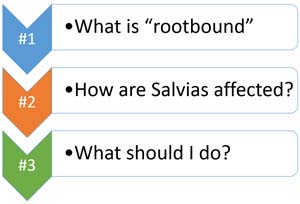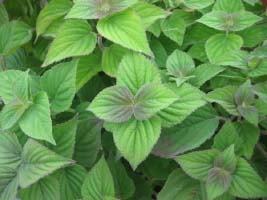
Seeing often leads to understanding. That is why Flowers by the Sea is now creating how-to videos on a variety of plant cultivation topics, which you can access through our blog. Watching a well-organized video can be almost as helpful as learning a hands-on skill by working directly with a mentor.
It is our goal to simulate that sort of mentoring for gardeners who would like extra support in learning skills concerning cultivation of Salvias and companion plants. Watching a video can soothe as well as inform a gardener who is worried about doing things wrong and harming plants.
Each of our how-to videos covers a basic skill, such as:
- Keeping plants attractive and healthy through trimming and pruning of woody growth
- Encouraging visits by pollinators including hummingbirds
- Creating container gardens for sunny or shady patios
- Propagating favorite perennials through cuttings
- Hard pruning Salvias at the right times to foster growth but avoid plant damage, and
- Unpacking and caring for mail-order plants.
If there is a skill that you would like to see demonstrated in an FBTS video, please send us an email or call. That is a major way that we gain ideas for videos as well as written blog posts.
Posted: Wednesday, November 10, 2021
Synopsis:
Salvia BODACIOUS® ‘Hummingbird Falls’ is a natural substitute for sugar-water feeders. It’s also the world’s first hanging basket sage. Hummingbirds love this long blooming, cascading sage as you can see in this video filmed in a greenhouse at Flowers by the Sea (FBTS) Farm and Online Nursery. Hummingbird Falls is a heat-tolerant Salvia guaranitica hybrid developed at FBTS by Kermit Carter, who demonstrates how to plant it for optimum growth of its dense, glossy foliage and abundant, violet-blue flowers. Carter offers tips about choosing the best size and type of planters, selecting well-draining potting mix, avoiding soil compaction, and creating a snug planting hole that protects roots and encourages growth.
This video about Salvia BODACIOUS® ‘Hummingbird Falls’ is part of our Views from the Garden video series published in the FBTS Everything Salvias Blog. Flowers by the Sea is a farm and online, mail order nursery specializing in the Salvia genus.
Watch the Video
Posted: Tuesday, February 24, 2015
Synopsis:
Growing Salvias from plant cuttings is simple with a bit of expert advice from Flowers by the Sea horticulturist Kermit Carter. Although many Salvias are woody, the tips of their stems are soft and green. They're called softwood tips. In this video, Carter talks about how to select the best cuttings for propagation. He shows how long plant cuttings need to be and explains plant nodes -- the points from which roots grow. Sometimes the leaves of a cutting require more moisture than a stem can absorb. Carter trims portions of leaves to reduce wilt and improve rooting. Demonstrating a standard FBTS procedure, he accelerates rooting by dipping the stems of cuttings in powdered rooting hormone and inserting them in tiny foam blocks for easy growth. Carter also suggests heating mats to encourage growth. He shows what the foliage and root balls will look like a few weeks later when ready for transplanting.
Salvia Softwood Tip Cuttings is part of the Views from the Garden video series published in the FBTS Everything Salvias blog. Flowers by the Sea is a farm and online, mail order nursery specializing in Salvias.
Watch the Video
Posted: Wednesday, February 11, 2015
Synopsis:
Overgrown herbaceous perennial Salvias need to be divided into multiple smaller plantings. In this video, Flowers by the Sea horticulturist and co-owner Kermit Carter demonstrates how to split perennials, which are plants that die to ground in cold weather but return annually. Many perennial Salvias with basal, rosette foliage have roots that spread to form clumps of multiple plants. Carter says that breaking a clump into smaller pieces is similar to working a jigsaw puzzle; find the clump's crowns and you find the division points. Carter demonstrates how to complete the task quickly using simple tools, such as your fingers and a serrated bread knife. He removes dead foliage and spent soil to ready the plants for replanting in quality potting mix. Then he explains how to encourage root growth by placing the pots in partial sun so soil doesn't get too dry.
Dividing Herbaceous Perennial Salvias is part of the Views from the Garden video series published in the FBTS Everything Salvias blog. Flowers by the Sea is a farm and online, mail order nursery specializing in Salvias.
Watch the Video
Posted: Friday, January 30, 2015
Synopsis:
In this video, Flowers by the Sea horticulturist and co-owner Kermit Carter explains a simple method for starting Salvias from seed. First, he mixes a pinch each of two powdered inoculants into enough potting soil for a plant. Carter explains that the inoculants combat bacterial diseases, strengthen roots and aid transfer of nutrients from the potting soil, which is a soilless mix containing peat, perlite and biofungicides. He places the soil in a short, 3 1/2-inch container and tamps it down gently so the pot is about half full. Next, he adds an inch of lava gravel mixed with perlite to improve drainage so seedlings won't rot. The final steps include scattering seeds on the lava mix, then applying an ultra-thin layer of horticultural grit, such as crushed granite, on top before watering. The grit keeps the seeds in place but allows sunlight to penetrate for germination.
FBTS Growing Salvia from Seed is part of the Views from the Garden video series published in the Everything Salvias blog of Flowers by the Sea, a horticultural farm and an online, mail order plant nursery.
Watch the Video
Posted: Wednesday, October 15, 2014
Synopsis:
Beneficial insects help control destructive insects in greenhouses and gardens. Flowers by the Sea uses beneficials to keep plants free of pests and to avoid use of harmful pesticides. FBTS is a horticultural farm in Northern California specializing in hundreds of ornamental Salvia species. In this video, FBTS horticulturist and co-owner Kermit Carter talks about the use of predatory mites called Persimilis and Fallacis to attack plant-eating spider mites and Encarsia wasps to control whiteflies. Carter shows how a tiny box from an insectary contains thousands of helpful insects, including ladybugs, which keep his farm free of pests. The microscopically small predatory mites come packaged with bean leaves that make it easy to distribute them in the garden. Paper strips for overhead hanging contain the wasp eggs. This video is part of the FBTS Everything Salvias Blog series Views from the Garden.
Watch the Video
Posted: Saturday, September 20, 2014
Synopsis:
Summer and fall pruning of Salvias requires only light trimming of spent blossoms, which is known as deadheading. It increases bloom for Autumn Sage (Salvia greggii) and Mountain Sage (Salvia microphylla), which are particularly abundant bloomers in autumn. In this video from Northern California's Flowers by the Sea farm, FBTS horticulturist and co-owner Kermit Carter shows how to use sharp hand pruners to quickly remove flower spikes that have gone to seed. Carter explains how flowering plants have less energy to put into blossoming if they are setting seed. Removal of spent blossoms improves a plant's appearance and makes continuous bloom possible. FBTS specializes in the Salvia genus, which contains about 1,000 species. This video is part of FBTS Everything Salvias Blog series Views from the Garden.
Watch the Video
Posted: Thursday, September 18, 2014
Synopsis:
When a container-planted Salvia grows too large for it pot, it's time to move it to roomier quarters. But how much extra space is too much and what kinds of containers are best? In this video from Northern California's Flowers by the Sea family farm, FBTS horticulturist and co-owner Kermit Carter shows how to select the right size of pot for a Salvia based on its size and need for moisture. He talks about the differences between plastic and clay pots: Carter explains that although plastic pots may be best for conserving moisture in semi-arid parts of the nation, he prefers terra cotta clay pots for their better breathability and drainage. FBTS specializes in the Salvia genus, which contains about 1,000 species. This video is part of the FBTS Everything Salvias Blog series Views from the Garden.
Watch the Video
Posted: Thursday, September 11, 2014
Synopsis:
Before planting a Salvia in the ground or moving it to a larger container, you should determine whether it has become rootbound and needs to have its rootball loosened. Salvias tolerate being rootbound more easily than most flowering plants. However, a Salvia needs extra attention before replanting if its roots dangle from the pot's drain holes and are so dense that they overwhelm the soil. Then the rootball feels too firm and can't be replanted as is. In this video from Northern California's Flowers by the Sea family farm, FBTS horticulturist and co-owner Kermit Carter removes several plants from their containers to show different stages of heavy rooting. Carter demonstrates a variety of methods for loosening roots and soil before replanting. FBTS specializes in the Salvia genus, which contains about 1,000 species. This video is part of the FBTS Everything Salvias Blog series Views from the Garden.
Watch the Video
Posted: Tuesday, August 20, 2013
Synopsis:
Flowers by the Sea offers videos about plant cultivation in its Northern California demonstration gardens. In this video, first-time FBTS customers see how the company ships live potted plants so they arrive moist and healthy. Longtime horticulturist and FBTS co-owner Kermit Carter demonstrates how to remove the paper-wrapped plants from their box when they arrive a few days after shipping. He suggests checking them against the packing list and examining the plants for damage, which should be as minimal as the yellowing of a few leaves. This yellowing is due to the brief onset of dormancy while the plants are boxed. Unpacking is followed by a few days of hardening off in partial shade before planting. Carter explains that although most FBTS Salvias benefit from gentle misting after unpacking, the ones with blue tags are exceptionally drought-resistant and need to be allowed to go almost dry before watering. This video is part of the FBTS Everything Salvias Blog series Views from the Garden.
Watch the Video
Posted: Thursday, August 8, 2013
Synopsis:
Pruning makes some people nervous. Am I doing too much or too little? Will I kill the plant? Is this the right time? Salvia specialist and longtime horticulturist Kermit Carter, co-owner of Flowers by the Sea Farm and Online Mail-Order Nursery, describes the pruning of Tangerine Scented Sage and answers all these questions. This video is part of the FBTS Everything Salvias Blog series Views from the Garden.
Watch the Video

